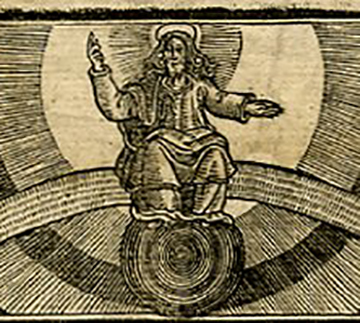Acts and Monuments as a Pedagogical Tool
In her book Childhood and Cultural Despair: A Theme and Variations in Seventeenth-Century Literature, Leah S. Marcus argues that attitudes towards children changed from the Middle Ages to the eighteenth century, when sentimental depictions of childishness became commonplace (69). Marcus makes the argument that the debate on the relative worth of childishness mirrored an ideological struggle between future-oriented Puritans and nostalgic conservatives, and argues that the shift towards sentimental depictions of children mirrored the shift from a feudal to a capitalistic economy (69-70). Puritans, who stressed the ravages of original sin, were opposed to childishness though not to children (70). In contrast, conservative Anglicans, influenced by the child motifs so prominent in Counter Reformation devotionalism, discovered in childhood a symbolic link with an idealized past (70) They interpreted the natural playfulness of children not as evidence of original sin, but as remnants of angelic purity. In reaction against humanism’s emphasis on the intellect and against what they perceived as chaotic change and the erosion of traditional values, conservative Anglicans envisioned a return to childhood (70).
What do new notions about playing and childhood innocence have to do with Foxe’s Acts and Monuments?
After looking at one of the original woodcuts depicting Henry IV, Conrad II, and Bertha of Savoy (right), it becomes clear that the 1610 version (as discussed on the previous page) came to reflect new ideas about childhood purity. A shift towards innocence becomes evident and offers insight into how notions of childhood evolved within a fifty-year time span.
In the earlier woodcut for Acts and Monuments, artists Luborsky and Ingram depicted clerics and monks mocking Henry, his wife, Bertha of Savoy, and Conrad the II. Notably, Pope Gregory VII is shown dallying with a woman on the upper balcony. This edition of the image appeared in the second (1570), third (1576), and fourth (1583) early English editions. Thus by the 1610 edition, the woodcut had been revised, effectively removing the Pope and focussing on the actions of Henry, Bertha, and Conrad.
However, to what effect? Why remove depictions of impropriety on the Pope’s behalf?
Matthew Knox Averett suggests that by the seventeenth century, society came to believe that children must be protected from inappropriate behaviour, and that there is a whole realm of adult knowledge and activity from which children must be protected until they are older (5). Thus the woodcuts reflect a shift towards childhood innocence.
A final difference that is worthy of note is Conrad’s body position. While the 1570 woodcut shows him looking up at his father, the Emperor, the 1610 version shows him looking directly at the viewer. Thus instead of seeking guidance, the 1610 Conrad is constructed as increasingly confident.
So what?
The takeaway, I propose, is that the woodcut images were teaching children how to be children. While a 1570s child might look at the older woodcut and internalize ideas about how children should behave, in this case, looking up at a parent for guidance, a 1610 child might look at the newer version of the woodcut and be inspired by Conrad’s arresting confidence. As Warren Wooden argued, the woodcuts were paramount for the text’s dissemination to children. Thus children were surely influenced, either directly or indirectly, by the values eschewed in the woodcuts. Thus the woodcuts – and indeed the text itself – negotiated childhood identity during the sixteenth and seventeenth centuries.


